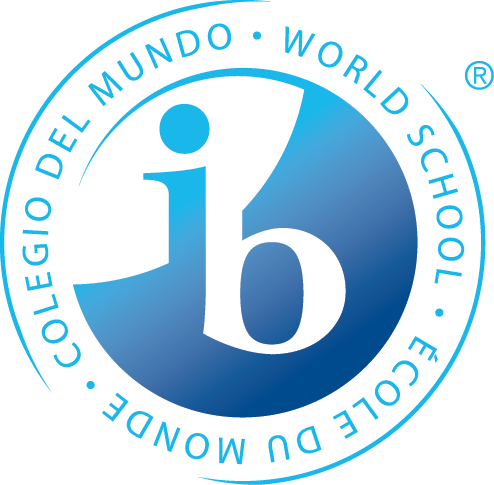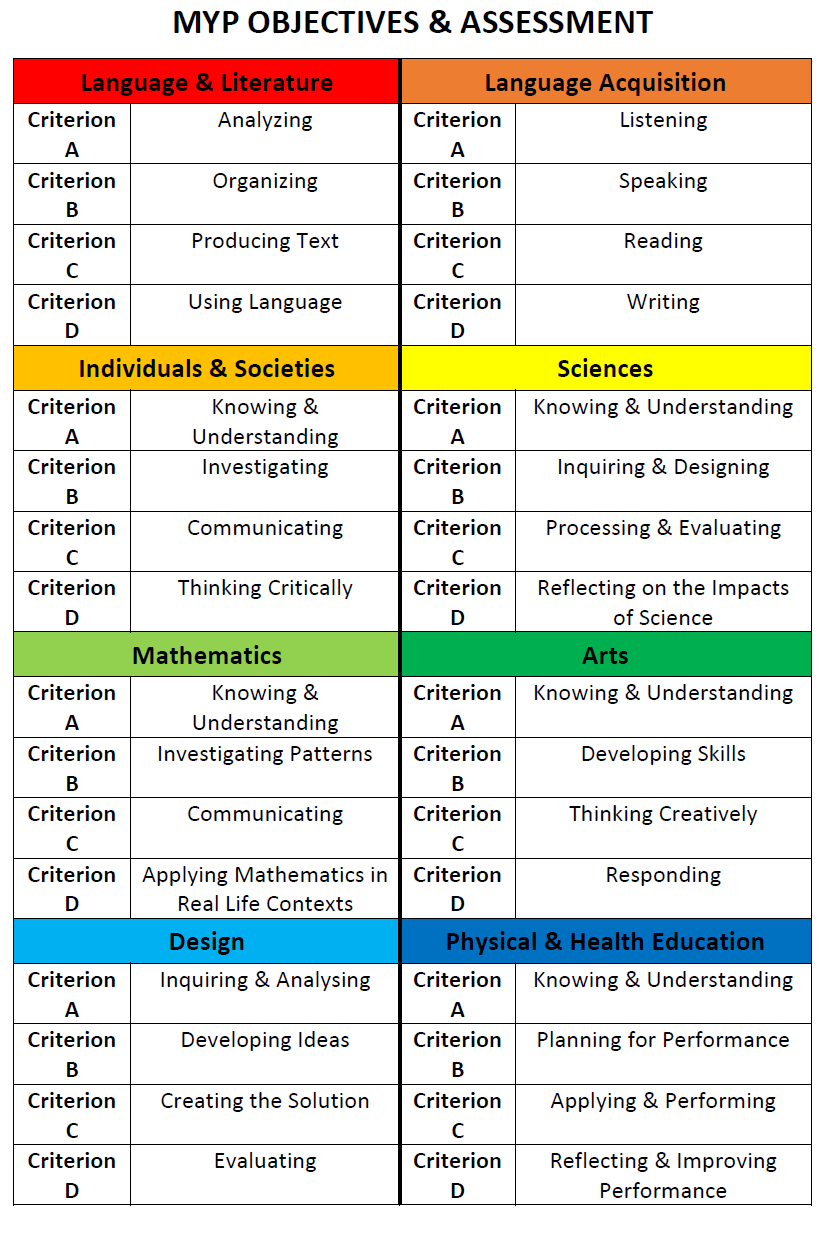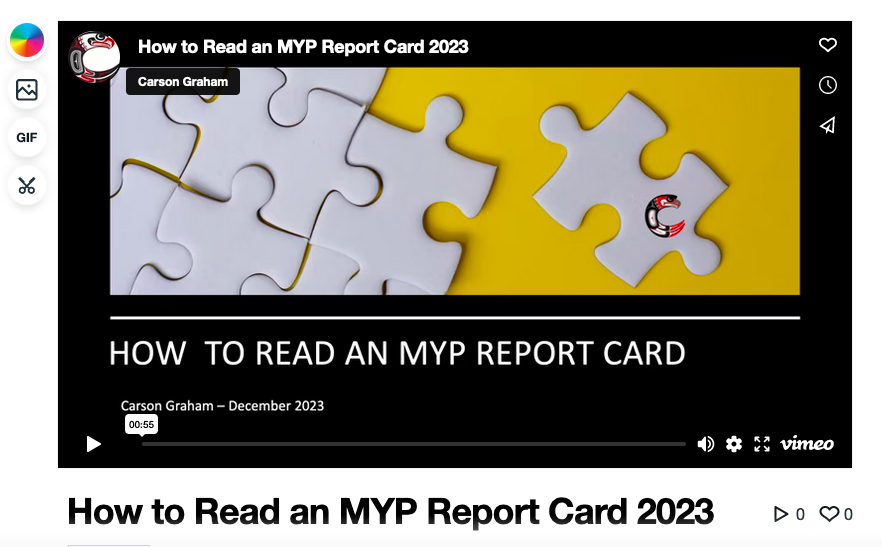

ASSESSMENT:
Learning is an ongoing process and assessment helps students to know where they are in their learning journey. Teachers use a combination of formative and summative activities to create an understanding of what a student knows, can do, and understands. Assessment in the MYP is proficiency -based and criterion
referenced. Teachers use descriptors from MYP rubrics to determine the achievement levels (0-8) of students in 4 criteria (A-D) in each of their MYP courses. Teachers use a best-fit approach when determining levels and will value the most consistent and most recent evidence of learning.
Below is a summary of the 4 criterion in each MYP course.

PROFICIENCY SCALE & MYP LEVEL SUMMARY
Student progress is communicated in levels (0-8) on each of 4 criterion which relate to an achievement descriptor and level of proficiency.
Level 0: The student has not submitted work and/or the student does not reach a standard described by the descriptors of the MYP criteria.
Level 1-2: The student demonstrates an initial understanding of the concepts and competencies relevant to the expected learning.
Level 3-4: The student demonstrates a partial understanding of the concepts and competencies relevant to the expected learning.
*Note that a 4 is not equivalent to 50%, but rather indicates that the student demonstrates a partial understanding of the course.
Level 5-6: The student demonstrates a complete understanding of the concepts and competencies relevant to the expected learning.
Level 7-8: The student demonstrates a sophisticated understanding of the concepts and competencies relevant to the expected learning.
REPORTING:
On the
report card, your child will receive a level from 0 to 8 in each criterion that has been assessed. Carson Graham does not report letter grades or percentages for MYP courses. See below for a video explanation of a Carson Graham MYP Report Card.

A more detailed description of the criteria and rubrics for each grade and subject is on
the course outline for each course.
SUMMARY OF LEARNING:
At the end of a MYP course, a student's “Overall Level of Achievement" in that subject is determined. The component scores from the 4 criteria (Criterion A, B, C & D) are added together and this sum matches a specific level determined from the 7-point scale shown below. This Overall Level of Achievement aligns with a descriptor of the student's ability in that course and an overall proficiency level and is reflected on the final report card.
MYP rubric criterion total (A+B+C+D)
| IB MYP Overall Level of Achievement
| Overall Proficiency Level
| Description of the Final Grade (this language appears automatically on the final report card) |
| 1-5 | 1 | Emerging | Produces work of very limited quality. Conveys many significant misunderstandings or lacks understanding of most concepts and contexts. Very rarely demonstrates critical or creative thinking. Very inflexible, rarely using knowledge or skills. |
6-9 | 2
| Emerging | Produces work of limited quality. Expresses misunderstandings or significant gaps in understanding for many concepts and contexts. Infrequently demonstrates critical or creative thinking. Generally inflexible in the use of knowledge and skills, infrequently applying knowledge and skills. |
| 10-14 | 3 | Developing | Produces work of an acceptable quality. Communicates basic understanding of many concepts and contexts, with occasionally significant misunderstandings or gaps. Begins to demonstrate some basic critical and creative thinking. Is often inflexible in the use of knowledge and skills, requiring support even in familiar classroom situations. |
| 15-17 | 4 | Developing | Produces good-quality work. Communicates basic understanding of most concepts and contexts with few misunderstandings and minor gaps. Often demonstrates basic critical and creative thinking. Uses knowledge and skills with some flexibility in familiar classroom situations, but requires support in unfamiliar situations. |
| 18 | 4
| Proficient | Produces good-quality work. Communicates basic understanding of most concepts and contexts with few misunderstandings and minor gaps. Often demonstrates basic critical and creative thinking. Uses knowledge and skills with some flexibility in familiar classroom situations, but requires support in unfamiliar situations. |
| 19-23 | 5 | Proficient | Produces generally high-quality work. Communicates secure understanding of concepts and contexts. Demonstrates critical and creative thinking, sometimes with sophistication. Uses knowledge and skills in familiar classroom and real-world situations and, with support, some unfamiliar real-world situations. |
| 24-25 | 6 | Proficient | Produces high-quality, occasionally innovative work. Communicates extensive understanding of concepts and contexts. Demonstrates critical and creative thinking, frequently with sophistication. Uses knowledge and skills in familiar and unfamiliar classroom and real world situations, often with independence. |
| 26-27 | 6 | Extending | Produces high-quality, occasionally innovative work. Communicates extensive understanding of concepts and contexts. Demonstrates critical and creative thinking, frequently with sophistication. Uses knowledge and skills in familiar and unfamiliar classroom and real world situations, often with independence. |
| 28-32 | 7
| Extending | Produces high-quality, frequently innovative work. Communicates comprehensive, nuanced understanding of concepts and contexts. Consistently demonstrates sophisticated critical and creative thinking. Frequently transfers knowledge and skills with independence and expertise in a variety of complex classroom and real-world situations.
|